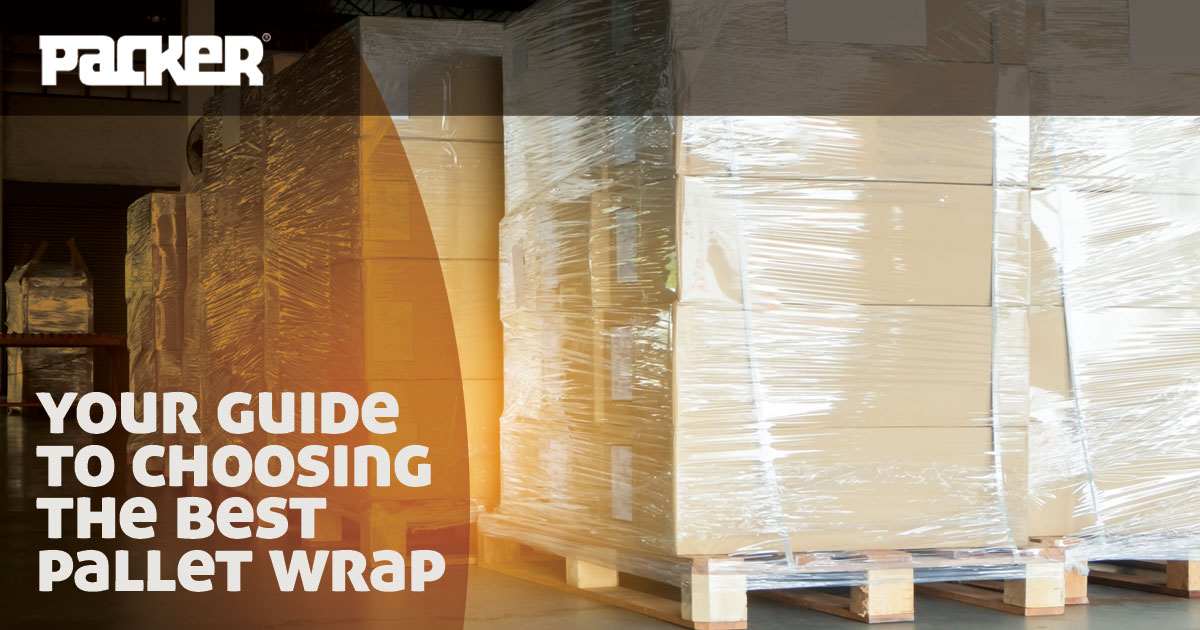
Pallet wrap, also known as stretch wrap, is a plastic product that keeps goods and items secure while they’re being stored or transported on a pallet. There are several different types of pallet wrap for different purposes, although they all work in much the same way. It’s always best to use the right sort of wrapping for your particular purpose.
What is pallet wrap?
Pallet wrap is a very thin, stretchable and clingy plastic film, often made from polyethylene. The film is stretch-wrapped around a stack of products and the pallet that they’re on and this applies pressure and tension to the stack, preventing it from moving or slipping off the pallet.
You can recycle some types of pallet wrap, but you’ll have to make sure that your local facility accepts soft plastics.
Why use pallet wrap?
These wraps help to prevent some of the problems that can happen to produce during storage and transit. The rolls of wrap come in different widths and the films themselves can have different thicknesses and formulations so they can be used with a variety of product types and sizes. The main benefits of using pallet wrap include:
- Protection from contamination or tampering
- Protection from damp, dust or other environmental damage
- The prevention of injuries to handlers caused by unsecured stacks of boxes
- An increase in stack heights, if you also use edge guards, so you can maximise your floorspace, and
- Clean, dry and pristine boxes and packages for happy customers.
Applying your pallet wrapping
You can apply your wrapping to your product stacks manually, semi-manually or automatically with a range of rolls and dispensers. Larger loads can be tiring to wrap manually, so many warehouses use semi-automatic and automatic machines.
The different varieties of pallet wrap
There are several varieties of pallet wrap, each one suitable for specific load sizes and performance needs, as well as budget and longevity.
Pre-stretch wrapping
This is wrapping that’s already been stretched somewhat during manufacture to improve its strength and stability under a load, as well as to reduce the amount of wrap used per “job”. This wrap can be used with machines or applied manually.
Cast stretch film
This is a more aesthetically-pleasing film, with better “see-through” and gloss. It only clings to itself and has no unpleasant additives and, with its good transparency, is popular in the food and catering industries.
Blown stretch film
Made by the blown extrusion process, this wrapping film has great stretching and puncture-resistant properties so it’s used widely for heavier and more irregular loads or loads that need a lot of tear-resistance. This film can be quite noisy when it’s unwound from its reels.
The different types of application
Machine pallet film
This is designed to be applied to loads, usually larger loads, with a wrap machine, which speeds up the process, making it safer and more efficient, as well as keeping packaging material costs down.
Hand-held pallet wraps
These are typically used for smaller volumes of smaller products and loads, such as fresh food packaging and smaller pallet loads of lighter objects.
Choosing the best pallet wrap for your requirements
It’s important to use the right type of pallet wrap for your products so that you’re getting the most out of them and your products and staff are safe.
Think about the performance you need
You need to think about the shape of the loads you’ll be wrapping. You need as much yield strength – how much stress the film can withstand without becoming permanently deformed – as possible. The yield strength is especially important when you’re wrapping irregular or jutting products or loads, while if you’re mostly winding the film around regularly-shaped and stacked boxes, the yield strength isn’t quite so vital.
How much reinforcement do your loads need?
If you need to apply several wraps of your film to a particular area on a pallet and its load, which is known as banding, then you might prefer to use lighter-weight, cheaper films to save money and create less waste at the other end.
Your products
What are you wrapping? How much does each pallet weigh when loaded and what sort of shapes are your loads? You also need to think about what will happen to the load once it’s wrapped – will it sit comfortably in a warehouse for a few months or is it being shipped internationally? Longer but static storage needs more emphasis on protection against damp, dust, pests and so on, whereas a “busier” load will need more stability and a wrap with greater tensile strength.
In addition to this, you might like to use wrapping of different colours to mark out different types of product or to obscure your goods from potential thieves.
Do you wrap a lot of loads or pallets?
If you don’t wrap up many loads and pallets each week then a hand-held dispenser should be enough for your staff. As soon as you move onto wrapping a few tens of pallets a day, then machine wrapping saves time and materials as well as being safer for your employees.



